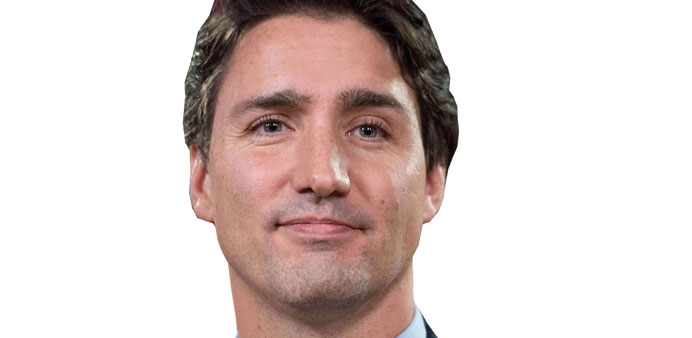Reuters/Ottawa/Washington
Canada’s government will inevitably have to cut some corners on security screening to achieve its ambitious goal of bringing in 25,000 Syrian refugees by year-end, said current and former security sources.
The plan by newly elected Prime Minister Justin Trudeau seeks to complete in six weeks a process that can take up to two years in the US, where last Friday’s attacks in Paris have sparked a political backlash against plans to allow in 10,000 Syrians over the coming year.
In Canada, which shares about 5,500 miles (8,850km) of relatively porous border with the US, Friday’s attacks have prompted calls for Trudeau to push back the Jan. 1 deadline to ensure all the refugees are properly screened.
Trudeau has vowed to stick to the plan, reiterating the security of Canadians would be paramount when dealing with the refugees.
“Diversity is Canada’s strength. These vicious and senseless acts of intolerance have no place in our country and run absolutely contrary to Canadian values of pluralism and acceptance,” Trudeau said yesterday, referring to an attack on a Muslim woman in Toronto, a fire at an Ontario mosque and the smashing of windows at a Hindu temple.
The Canadian plan will entail background checks that include biometric and fingerprint checks, as well as health assessments. Some screening will have to be done after the refugees arrive in Canada given the short time frame.
That could create vulnerabilities, said one recently retired Canadian intelligence official, since a refugee could already be in the country by the time any red flags are raised by the screening.
“You can’t say that when you cut some corners and speed up the system that it’s completely risk-free,” said the former official, who has knowledge of the immigration system.
The ex-official said it was unclear if the refugees would immediately be free to settle in Canada or would be detained in some way pending the screening.
A current Canadian intelligence official said there was “a clear risk” given the pace at which security screeners would have to work to interview, select and process such a high volume of applicants.
Josee Sirois, a spokeswoman for the Public Safety ministry, said that a “thorough” screening process would be in place, but that the vast majority of Syrian refugees “pose little or no risk to Canada.”
In the US, two dozen state governors, mostly Republicans, have vowed not to accept any refugees, despite reassurances from the State Department that the immigrants will be rigorously screened to block any potential militants.
Rand Beers, former deputy secretary of the US Department of Homeland Security, said that weaker security screening north of the border would be a worry.
“There would be a concern for anything that is less than our screening, and even we would say that our screening isn’t perfect,” he said.
Canada will primarily focus on families with children under the age of 18 who have been in Lebanon, Turkey or Jordan since the beginning of the Syrian conflict in 2011, said an intelligence source and a non-government source familiar with deliberations.
The first step in the Canadian plan is to select refugees registered with the UN High Commissioner for Refugees (UNHCR), then conduct checks against Interpol, Canadian security and immigration as well as foreign allies’ watchlists before issuing permanent or temporary residence permits.
Canadian immigration and border agents who have been dispatched to the region, most of them in Beirut, will select the refugees and raise any red flags to the Royal Canadian Mounted Police or Canada’s spy agency for deeper screening.
Saskatchewan Premier Brad Wall, who asked Trudeau to suspend the plan on Monday citing security concerns, said the government was moving too quickly and questioned whether normal vetting steps were being skipped.
“We’re going from years to a couple of months in terms of the wait time or the process,” Wall said on CBC TV.

